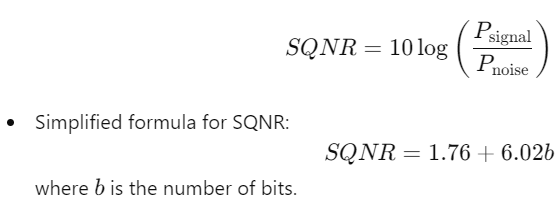Digital Signal Processing (LECTURE 1-4)
1/34
There's no tags or description
Looks like no tags are added yet.
Name | Mastery | Learn | Test | Matching | Spaced |
|---|
No study sessions yet.
35 Terms
SIGNAL
It is a physical quantity, or quality, which conveys information
Continuous-time(CT) signals
signals that are defined at all instants of time. Usually denoted by 𝑥(𝑡)
Discrete-time (DT) signals
signals identified as sequence of numbers. Usually denoted by 𝑥[𝑛]
Continuous-valued (CV) signals
signals that takes all possible values on a finite or an infinite range
Discrete-valued (DV) signals
signals identified as sequence of numbers. Usually denoted by 𝑥[𝑛]
Take discrete values.
Multichannel Signals
signals that are generated by multiple sources or multiple sensors.
Multidimensional Signals
signals with values from multiple independent variables
Deterministic Signals
signals that can be uniquely described by an explicit mathematical expression
Random Signals
signals that cannot be exactly known or that are unpredictable
Real-valued signals
signals that contain real values.
Complex-valued signals
signals that contains two values that are typically quadrature (90-deg) separated
SYSTEM
It is an entity that manipulates one or more signals to accomplish a function, thereby yielding new signals.
SIGNAL PROCESSING
It is the process of converting of input to output signal.
A typical reason for signal processing is to eliminate or reduce an undesirable signal
TYPES OF SIGNAL PROCESSING
Analog Signal Processing
Digital Signal Processing
EXAMPLES OF DIGITAL SIGNAL PROCESSING
Digital Filtering: Removing noise or unwanted components from signals.
Interference Cancellation in ECG: Eliminating noise from biomedical signals.
Signal Spectrum Analysis: Analyzing the frequency components of a signal.
CD Recording and Playback Systems: Processing of audio signals in digital media.
Types of Signals
Continuous-time (CT) signals: Defined at all instants of time, represented as x(t)x(t)x(t).
Discrete-time (DT) signals: Identified as a sequence of numbers, represented as x[n]x[n]x[n].
Continuous-valued (CV) signals: Take all possible values within a range.
Discrete-valued (DV) signals: Take discrete values.
Multichannel signals: Generated by multiple sources or sensors (e.g., multi-lead ECG).
Multidimensional signals: Defined by multiple independent variables (e.g., images, TV signals).
Classification of Signals
Deterministic signals: Can be exactly described by a mathematical expression.
Random signals: Cannot be precisely predicted.
Real-valued signals: Contain real values.
Complex-valued signals: Contain two quadrature (90-degree separated) components.
Analog Signal Processing
Signals are processed in their analog form (e.g., traditional filters).
Digital Signal Processing (DSP)
Signals are converted to digital form, processed, and then converted back to analog if necessary
Typical Digital Signal Processing System
Analog-to-Digital Conversion (A/D): Converts continuous-time continuous-value (CT-CV) analog signals into discrete-time continuous-value (DT-CV) signals.
Digital-to-Analog Conversion (D/A): Converts processed digital signals back into analog signals.
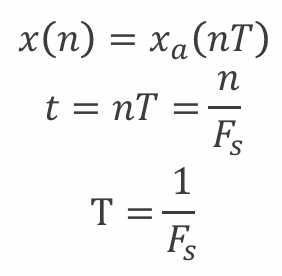
Sampling
The process of converting a continuous-time signal (CT) into a discrete-time signal (DT) by taking samples at regular intervals.


The number of samples taken per second (in Hz).
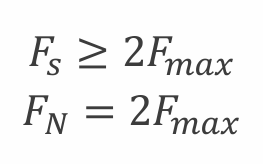
Nyquist-Shannon Sampling Theorem
To perfectly recover an analog signal, the sampling rate must be at least twice the highest frequency component of the signal.

Aliasing
A distortion that occurs when a signal is undersampled, causing high-frequency components to appear as lower frequencies in the sampled signal.
Analog Signals (Time and Frequency Domain)

Digital Signals (Time and Frequency Domain)

Undersampling
Occurs when the sampling rate is lower than the Nyquist rate, leading to aliasing (high-frequency signals appear as lower frequencies).

Oversampling
Sampling above the Nyquist rate
Oversampling creates more space in the frequency spectrum, which reduces the demands on the anti-aliasing filter.

Quantization
The process of converting a discrete-time continuous-amplitude signal into a digital signal by assigning each sample value a finite number of digits.
Two key parameters in quantization
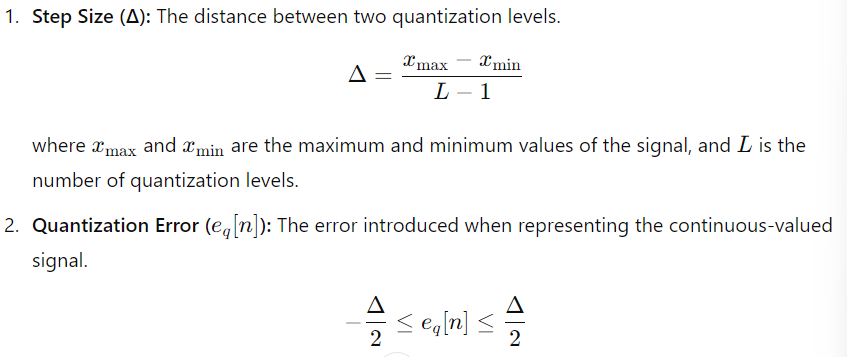
Types of Quantization
Unipolar Quantizer
Deals with analog signals ranging from 0 volt to a positive reference voltage.
Maximum Error: Full step size
Bipolar Quantizer
Deals with analog signals ranging from a negative reference voltage to a positive reference voltage.
Maximum Error: Half step size.
Coding
The process of assigning a unique binary number to each quantization level.
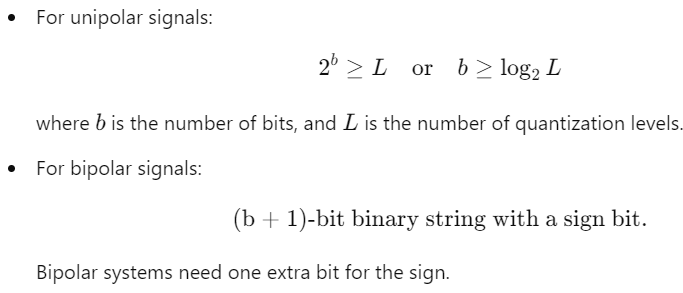
Dynamic Range (DR)
The ratio between the largest and smallest value that the analog-to-digital converter (ADC) can reliably measure.

Signal-to-Quantization-Noise Ratio (SQNR)
The ratio of the signal power to the quantization noise.
